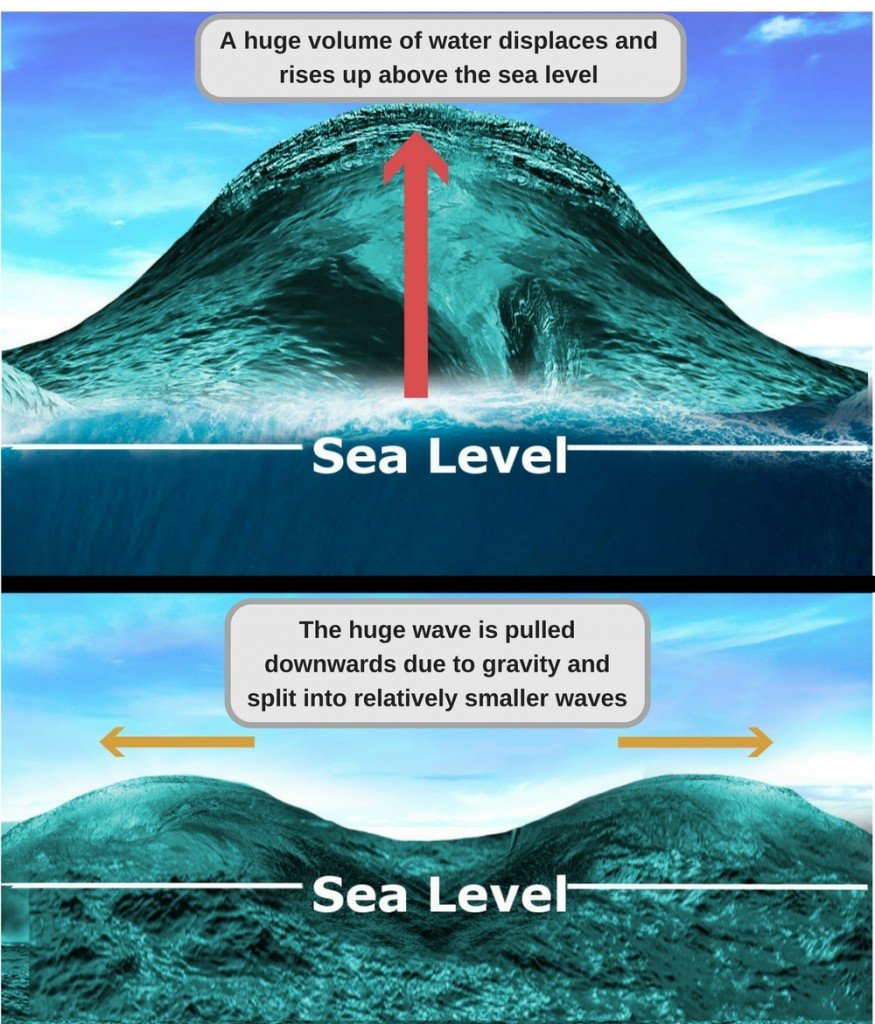
Diagram showing the processes involved in a tsunami approaching a coastline

Coastal ecosystems can act as a buffer against tsunamis. Mangrove reforested area in the Philippines.
The 2004 Indian Ocean Tsunami was undoubtedly one of the worst the world has ever seen. Within a short period of time, a trail of devastation made its way halfway around the globe and caused unimaginable misery.
The consequences vary from loss of livelihood for fishermen to unknown damages to coral reefs and flora and fauna where the waves came a few miles inland. In some fragile areas near the Indonesian coast, it may take years for the coral reefs to get back the balance and mangrove stands and coastal tree plantations may have been destroyed or severely affected.
With so much seawater coming inland, salination is another effect that not only makes the soil less fertile to support vegetation but also increases vulnerability to erosion, the impacts of climate change and food insecurity.
For humans, on the other hand, fisheries, housing and infrastructure were the worst affected. For an in-depth account of the ecological and economic consequences of the tsunami, read here. It throws light on how reclamation of land for agriculture and settlement, setting up of resorts in high-risk beaches and the drastic loss of mangrove forests by man increased the damage caused by the tsunami.
Are we prepared for another Tsunami?
Geologically speaking, a tsunami is like any other natural phenomenon caused mostly by natural forces of the planet. Man has to learn to respect the forces of nature in the quest for development and better opportunities.
The indiscriminate conversion of natural shorelines and mangrove forest ecosystems for shrimp farming, urban settlements, tourism development and other often unregulated and unplanned human activities over the past several decades often make the coastal areas and its inhabitants much more vulnerable to the immense destructive force of the tsunamis.
The need for a global effort to prevent and predict tsunamis has been widely articulated after the 2004 disaster. The article 'Tsunami Warning Systems' presents a brief overview of different warning systems and the international effort to set up a warning system across the globe.
For an update on the efforts at another level, visit the official site of the World Meteorological Organisation.
Natural barriers against tsunamis: coral reefs and mangroves
Apart from technology, we can also use natural barriers to protect us from natural disasters.
Coral reefs act as natural breakwaters, providing a physical barrier that reduces the force of a wave before it reaches the shore, while mangrove forests act as natural shock absorbers, also soaking up destructive wave energy and buffering against coastal erosion. Read more here.
When the tsunami struck, many fishermen took shelter in the mangroves and survived. In fact, some of the extensive damage could have been avoided if man had not destroyed the mangroves in the coastal areas.
http://wwf.panda.org/knowledge_hub/teacher_resources/webfieldtrips/natural_disasters/

No comments:
Post a Comment